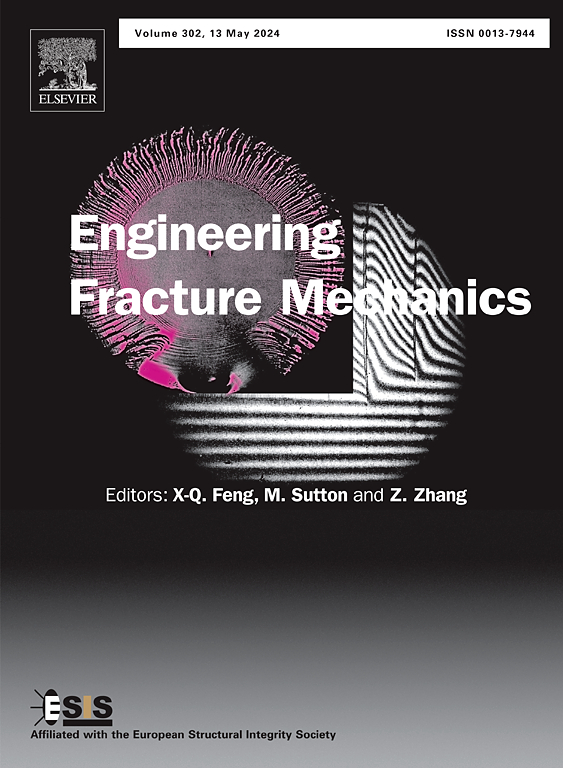A spatiotemporal deep learning framework for prediction of crack dynamics in heterogeneous solids: Efficient mapping of concrete microstructures to its fracture properties
IF 4.7
2区 工程技术
Q1 MECHANICS
引用次数: 0
Abstract
A spatiotemporal deep learning framework is proposed that is capable of two-dimensional full-field prediction of fracture in concrete mesostructures. This framework not only predicts fractures but also captures the entire history of the fracture process, from the crack initiation in the interfacial transition zone (ITZ) to the subsequent propagation of the cracks in the mortar matrix. Additionally, a convolutional neural network (CNN) is developed which is capable of predicting the averaged stress–strain curve of the mesostructures. The UNet modeling framework, which comprises an encoder–decoder section with skip connections, is used as the deep learning surrogate model. Training and test data are generated from high-fidelity fracture simulations of randomly generated concrete mesostructures. These mesostructures include geometric variabilities such as different aggregate particle geometrical features, spatial distribution, and the total volume fraction of aggregates. The fracture simulations are carried out in Abaqus/CAE, utilizing the cohesive phase-field fracture modeling technique as the fracture modeling approach. In this work, to reduce the number of training datasets, the spatial distribution of three sets of material properties for three-phase concrete mesostructures, along with the spatial phase-field damage index, are fed to the UNet to predict the corresponding stress and spatial damage index at the subsequent step. It is shown that after the training process using this methodology, the UNet model is capable of accurately predicting damage on the unseen test dataset by using just 470 datasets. Moreover, another novel aspect of this work is the conversion of irregular finite element data into regular grids using a developed pipeline. This approach allows for the implementation of less complex UNet architecture and facilitates the integration of phase-field fracture equations into surrogate models for future developments.
求助全文
约1分钟内获得全文
求助全文
来源期刊
CiteScore
8.70
自引率
13.00%
发文量
606
审稿时长
74 days
期刊介绍:
EFM covers a broad range of topics in fracture mechanics to be of interest and use to both researchers and practitioners. Contributions are welcome which address the fracture behavior of conventional engineering material systems as well as newly emerging material systems. Contributions on developments in the areas of mechanics and materials science strongly related to fracture mechanics are also welcome. Papers on fatigue are welcome if they treat the fatigue process using the methods of fracture mechanics.

 求助内容:
求助内容: 应助结果提醒方式:
应助结果提醒方式:


